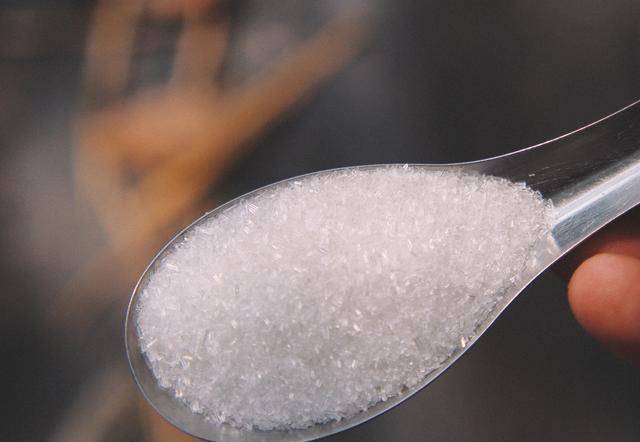People who regularly take antihypertensive drugs and want to keep their blood pressure stable should pay attention to avoiding three types of foods!
Hypertension is a common chronic disease in today’s society, affecting an increasing number of people. To control hypertension, many patients need to take antihypertensive drugs for a long time. However, in addition to drug treatment, daily diet is also a key factor affecting blood pressure stability. This article will focus on three types of foods that hypertensive patients, especially those who regularly take antihypertensive drugs, should pay special attention to avoiding in order to maintain stable blood pressure.
1. High-Salt Foods
1. Hazards of high-salt foods
High-salt foods are one of the risk factors for causing hypertension. The main component of salt is sodium chloride, excessive salt intake can increase the concentration of sodium ions in the body, thereby increasing the osmotic pressure of the blood and putting more pressure on the blood vessel walls. Long-term high-salt diet can not only worsen hypertension, but also lead to serious health problems such as heart disease and stroke.
2. Which foods belong to high-salt foods
Common high-salt foods include pickled foods (such as pickles, cured meat, etc.), instant noodles, canned foods, and some condiments (such as soy sauce, MSG, etc.). These foods often contain a large amount of salt added during the production process to enhance taste and shelf life.
3. How to reduce salt intake
(1) Choose fresh ingredients and avoid processed foods: Fresh vegetables and fruits are good choices for a low-salt diet, as they not only have low salt content but also are rich in potassium ions, which help lower blood pressure.
(2) Gradually reduce salt intake: Gradually reduce the amount of salt added during cooking to let your taste buds gradually adapt to a low-salt taste.
(3) Use spices and herbs as salt substitutes: For example, garlic, ginger, scallion, coriander, etc., can enhance the flavor of food and reduce dependence on salt.
2. High-Fat Foods
1. Hazards of high-fat foods
Excessive intake of high-fat foods can lead to elevated blood lipids, increased blood viscosity, which further burdens the blood vessel walls and is not conducive to blood pressure control. In addition, long-term high-fat diet can also easily lead to obesity, atherosclerosis, and other health problems.
2. Which foods belong to high-fat foods
High-fat foods mainly include fried foods (such as fried chicken, french fries, etc.), fatty meat, animal organs (such as pig liver, pig brain, etc.), some cheeses, and butter. These foods are high in fat content, and long-term excessive intake is detrimental to health.
3. How to reduce fat intake
(1) Choose lean meat: When consuming meat, choose lean parts such as chicken breast, lean beef, etc., to reduce fat intake.
(2) Choose healthy cooking methods: Avoid high-fat cooking methods such as deep-frying, frying, and choose low-fat cooking methods like steaming, boiling, roasting, etc.
(3) Consume foods rich in unsaturated fatty acids in moderation: Such as fish, nuts, etc., which are beneficial for cardiovascular health.
3. High-Sugar Foods
1. Hazards of high-sugar foods
Excessive intake of high-sugar foods can lead to blood sugar fluctuations, affect the normal secretion of insulin, thus adversely affecting blood pressure. Long-term high-sugar diet can also lead to metabolic diseases such as diabetes, obesity, etc.
2. Which foods belong to high-sugar foods
High-sugar foods mainly include sweets (such as cakes, chocolates, etc.), sugary drinks (such as carbonated drinks, fruit juice drinks, etc.), some fruits (such as lychee, longan, etc.), and refined rice and flour products (such as white rice, white bread, etc.). These foods have high sugar content, and long-term excessive intake is not conducive to blood pressure control.
3. How to reduce sugar intake
(1) Reduce the intake of sweets: Avoid excessive consumption of sweets, especially overly processed ones.
(2) Choose low-sugar fruits: Such as apples, oranges, etc., which are rich in vitamins and relatively low in sugar content.
(3) Moderate intake of coarse grains: Such as oats, brown rice, etc., rich in dietary fiber, which helps stabilize blood sugar levels.
#Hotspot Engine Plan# 4. Summary and Suggestions
For hypertensive patients who regularly take antihypertensive drugs, dietary adjustments are crucial. Avoiding high-salt, high-fat, and high-sugar foods, choosing a diet low in salt, fat, and sugar can help maintain stable blood pressure. In addition, combined with moderate exercise and good lifestyle habits, can better control hypertension and improve the quality of life.
Here are a few recommendations:
Regularly monitor blood pressure: Understanding one’s own blood pressure condition is the basis for preventing and controlling hypertension. Healthy diet: Follow the principles of a low-salt, low-fat, low-sugar diet, and eat more fresh vegetables and fruits. Moderate exercise: Choose appropriate exercise according to your physical condition, such as walking, jogging, aerobic exercises, etc. Maintain good lifestyle habits: Quit smoking, limit alcohol intake, get enough sleep, and maintain a pleasant mood. Follow medical advice and take medication as prescribed: Do not change the dosage of medications or stop taking them without medical advice to avoid affecting the antihypertensive effect.
Through comprehensive adjustments in diet and lifestyle, we believe that hypertensive patients can better control their condition and enjoy a healthy life. We hope this article provides some useful reference and assistance to everyone!


